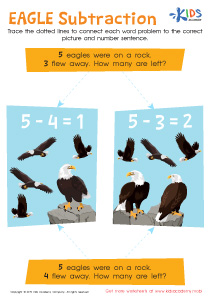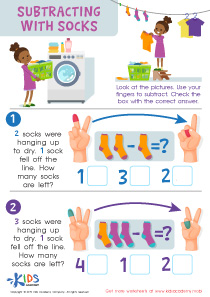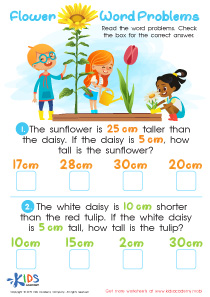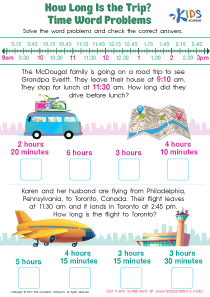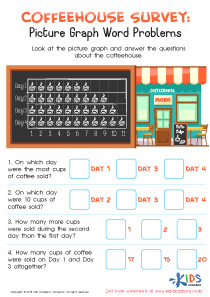Easy Two-step Word Problems Worksheets for Ages 4-8
5 filtered results
-
From - To
Discover our engaging "Easy Two-step Word Problems Worksheets for Ages 4-8!" Designed to help young learners develop critical thinking and problem-solving skills, these worksheets provide fun, age-appropriate scenarios that encourage children to tackle math challenges in a playful way. Each activity is crafted to promote understanding of basic math concepts through real-life contexts. With clear instructions and colorful illustrations, students will enjoy enhancing their analytical skills while building confidence in their abilities. Perfect for classroom use or at-home learning, our worksheets make math enjoyable and accessible for children aged 4 to 8. Start fostering a love for math today!
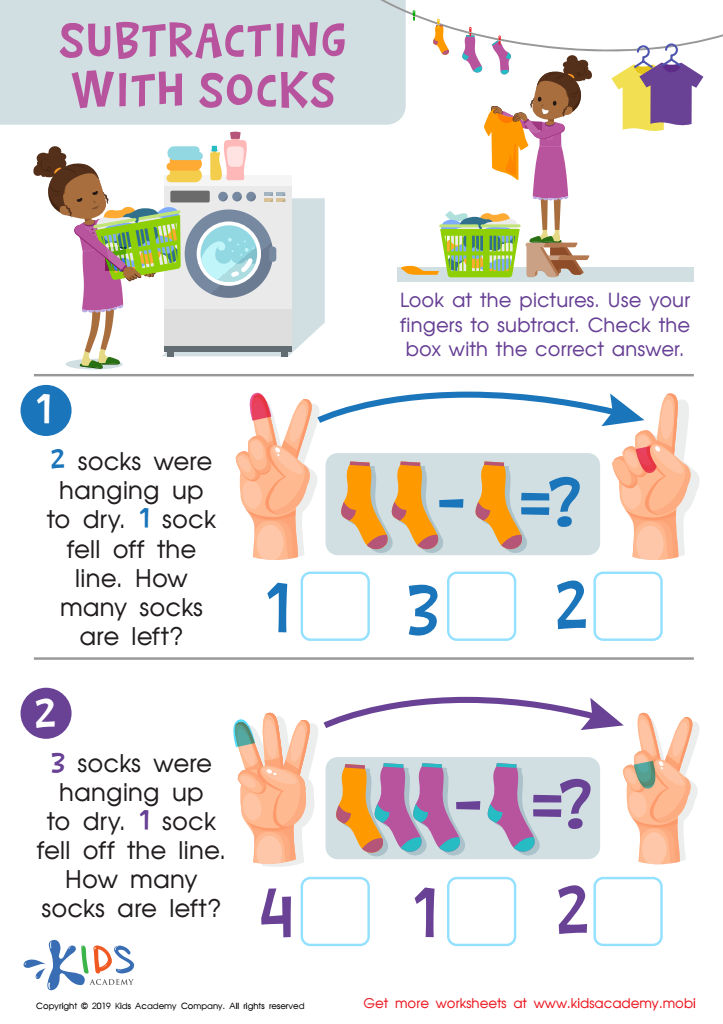

Subtracting Socks Worksheet
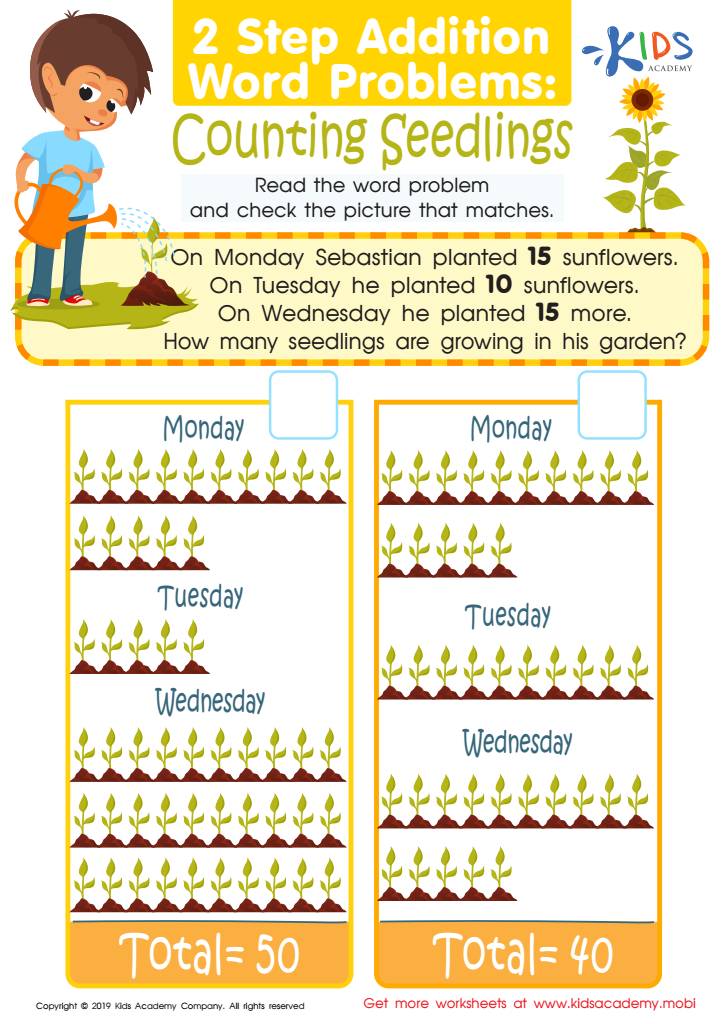

Counting Seedlings Worksheet
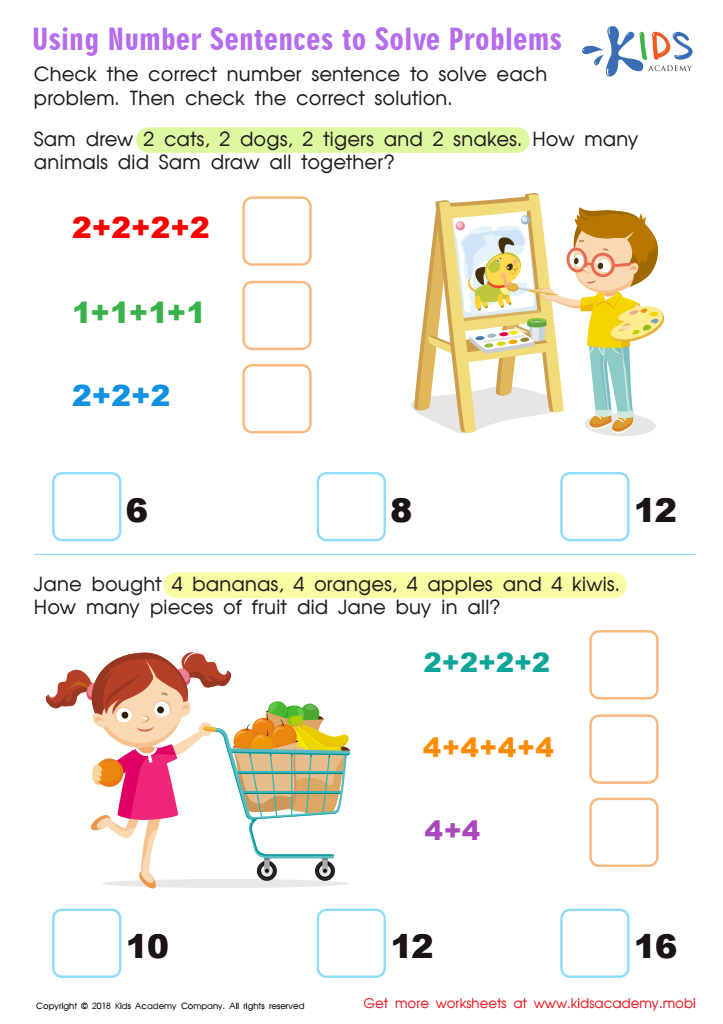

Using Number Sentences to Solve Problems Worksheet
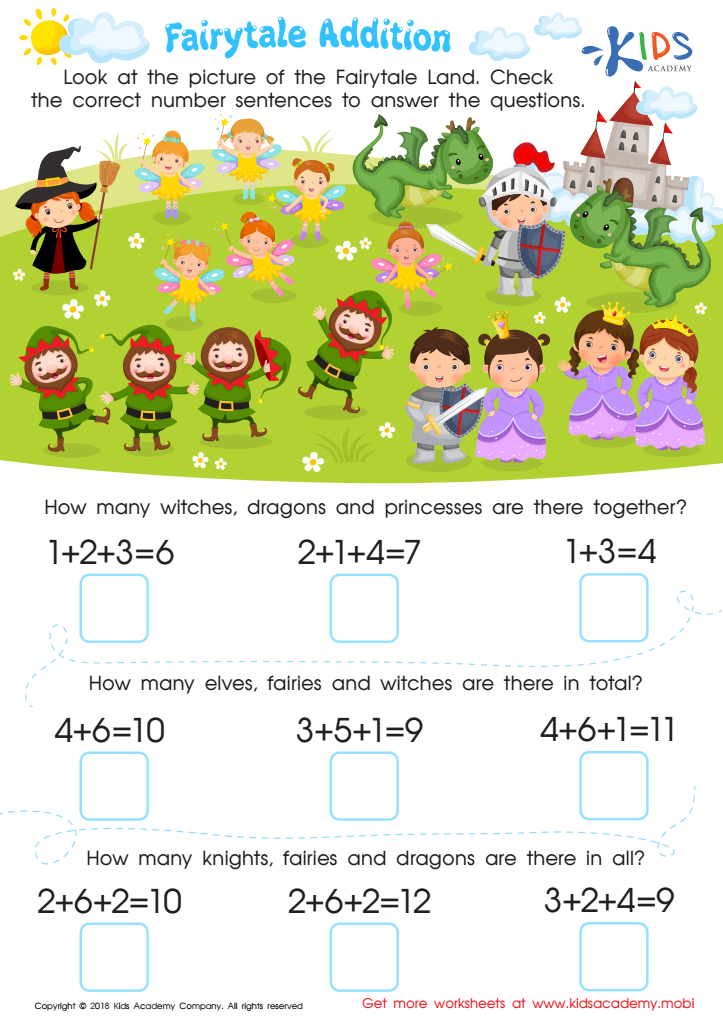

Fairytale Addition Worksheet
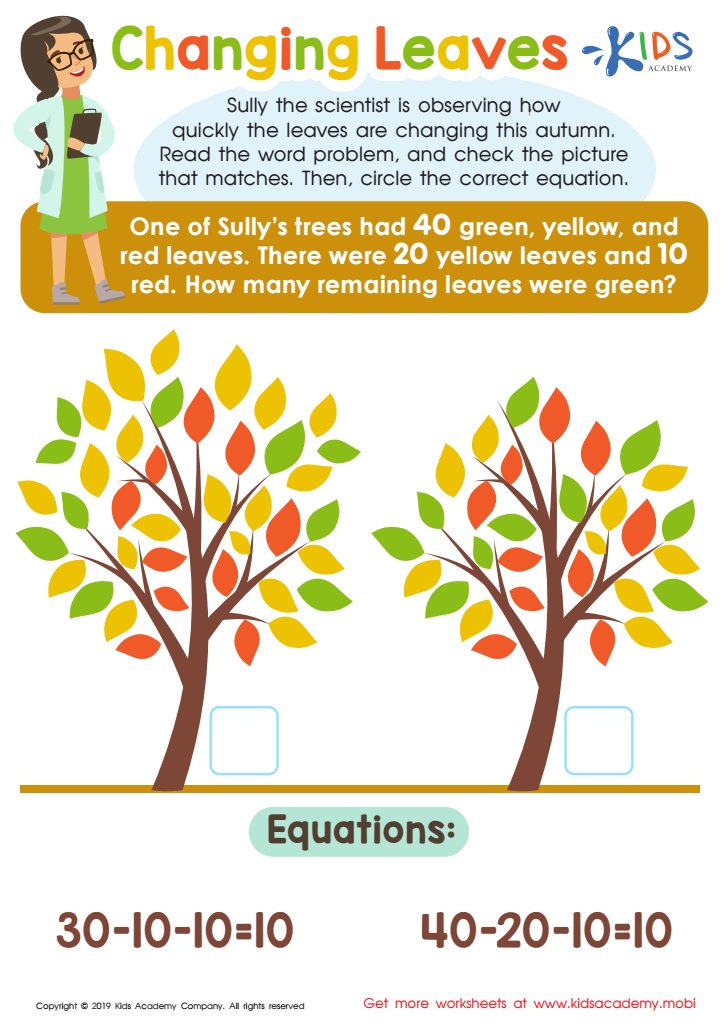

Changing Leaves Worksheet
Easy two-step word problems are essential tools for developing critical math skills in children aged 4-8. Parents and teachers should prioritize these problems because they lay the groundwork for logical thinking and problem-solving abilities. At this developmental stage, children are learning how to interpret language and apply it to quantitative scenarios, which enhances their comprehension and analytical skills.
Engaging with two-step word problems encourages children to think critically about the information presented. They learn to identify relevant data, plan an approach, and execute their calculations—all crucial skills for later mathematical success. Moreover, these problems promote perseverance, teaching children that complex challenges can be tackled step by step.
Additionally, incorporating word problems into math learning helps children understand real-life applications of math. This relevance not only improves their interest in math but also builds their confidence in using mathematical concepts outside of the classroom.
Lastly, exposing children to a variety of problem-solving formats fosters creativity and flexibility in thinking. By prioritizing easy two-step word problems, parents and teachers create a strong foundation for lifelong learning and develop a positive attitude towards math in young learners.
 Assign to My Students
Assign to My Students




